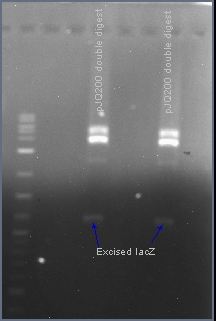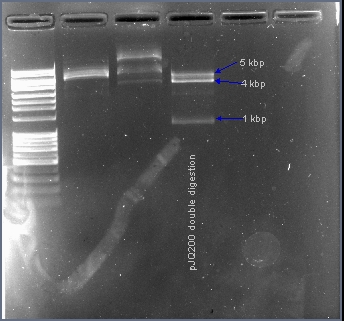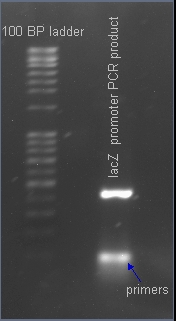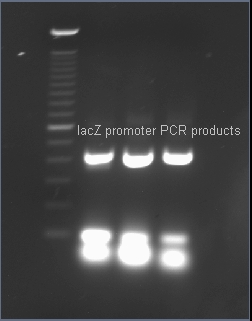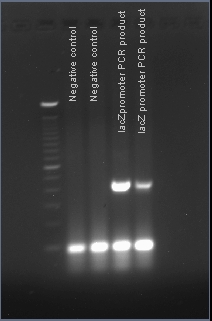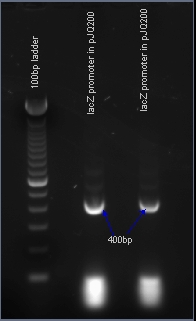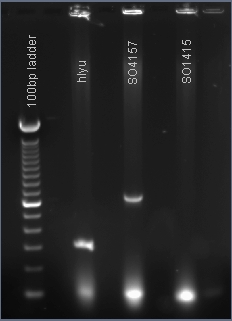Boston University/Plasmid Customization
From 2007.igem.org
(Difference between revisions)
(→Overview) |
(→Excising the sacB gene from plasmid pJQ200) |
||
| Line 17: | Line 17: | ||
| - | The native sacB gene was excised from the plasmid pJQ200 with the restriction enzymes EcoRI and HindIII. In the presence of 10% sucrose, the sacB gene acts as a suicide gene. After ligating a gene into this multiple cloning site, the plasmid pJQ200 should no longer be sucrose sensitive and should | + | The native sacB gene was excised from the plasmid pJQ200 with the restriction enzymes EcoRI and HindIII. In the presence of 10% sucrose, the sacB gene acts as a suicide gene. After ligating a gene into this multiple cloning site, the plasmid pJQ200 should no longer be sucrose sensitive and should retain the gentamicin antibiotic resistance gene. Positive transformants will survive in the presence of gentamicin and sucrose. |
| - | + | ||
| - | + | ||
| - | + | ||
| - | + | ||
| - | + | ||
===Verifying the presence of the lacZ promoter in the plasmid pJQ200=== | ===Verifying the presence of the lacZ promoter in the plasmid pJQ200=== | ||
Revision as of 15:02, 30 July 2007
Contents |
Overview
Excising the sacB gene from plasmid pJQ200
The native sacB gene was excised from the plasmid pJQ200 with the restriction enzymes EcoRI and HindIII. In the presence of 10% sucrose, the sacB gene acts as a suicide gene. After ligating a gene into this multiple cloning site, the plasmid pJQ200 should no longer be sucrose sensitive and should retain the gentamicin antibiotic resistance gene. Positive transformants will survive in the presence of gentamicin and sucrose.
Verifying the presence of the lacZ promoter in the plasmid pJQ200
